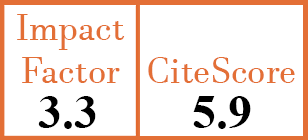Epidemiology
Low socioeconomic status and patient questionnaires in osteoarthritis: challenges to a “biomedical model” and value of a complementary “biopsychosocial model”
T. Pincus1, I. Castrejon2
- Department of Internal Medicine, Division of Rheumatology, Rush University Medical Center, Chicago, IL, USA. tedpincus@gmail.com
- Department of Internal Medicine, Division of Rheumatology, Rush University Medical Center, Chicago, IL, USA.
CER12813
2019 Vol.37, N°5 ,Suppl.120
PI 0018, PF 0023
Epidemiology
Free to view
(click on article PDF icon to read the article)
PMID: 31621564 [PubMed]
Received: 27/09/2019
Accepted : 27/09/2019
In Press: 14/10/2019
Published: 15/10/2019
Abstract
Modern medical care is based largely on a paradigm known as a “biomedical model,” in which “objective,” high-technology biomarkers guide clinical care, and most health outcomes are determined by health professionals rather than individuals, using drugs as the primary therapy. The biomedical model is spectacularly effective in the acute care inpatient hospital, the setting for 95% of medical education and training, and to guide management of many chronic diseases, such as hypertension and diabetes, for which a “gold standard” biomarker is a major determinant of clinical decisions. This model also has contributed importantly to knowledge of biomarkers, biochemical and structural abnormalities in osteoarthritis (OA) and other rheumatic diseases. However, a biomedical model has many limitations in understanding the long-term course of OA and many chronic diseases in outpatient medicine, the setting of 95% of activities that determine long-term health outcomes. Patient self-report questionnaires provide the most informative data concerning OA patient status and changes in status, and more significant data in the prognosis of outcomes such as mortality than laboratory or radiographic measures. Furthermore, the incidence, prevalence, morbidity, and mortality of OA is considerably greater in individuals of low versus high socioeconomic status. These associations are not unique to OA, and are seen in many diseases, including comorbid conditions which are the acute causes of death in OA. Associations of low socioeconomic and poor health are explained only in small part by limited access to medical services, the conventional explanation. Strong evidence suggests that socioeconomic status is a surrogate marker for patient self-management, actions and environment, in addition to actions of health professionals, in the pathogenesis, course and outcomes of chronic diseases. These observations suggest the value of a complementary “biopsychosocial model” to better understand pathogenesis, principles of treatments, and outcomes in OA and other chronic diseases. Inclusion of clinical information from patient questionnaires and socioeconomic status variables in clinical and research settings could add new understanding of biomarkers and pain in OA for both basic and clinical investigators. Furthermore, the data indicate that poor physical function assessed on a self-report questionnaire might be regarded as an important reversible risk factor in public health and research agendas, for which the OA community might be strong advocates.


